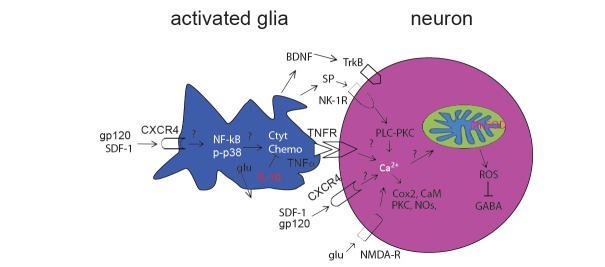Fig. (1).

Potential HIV-related neuropathic pain pathway. Peripheral nerve inflammation after HIV infection, promotes the release of neurotransmitters and neuropeptides that stimulate glial cells in the spinal cord. The activated glia induce release of pro-inflammatory factors, such as cytokines, nerve growth factors, chemokines, glutamates, etc., which bind their receptors on the neurons to induce a massive Ca2+ influx into neurons. Ca2+ is rapidly sequestrated by mitochondria. This consequently damages MnSOD activity and increases mitochondrial ROS production, which in turn results in synaptic plasticity of the dorsal horn neurons. It is possible that ROS injures the production of GABA through GAD67 synthesis inhibition. CaM = calcium-calmodulin; Chemo=chemokines; Cyto=cytokines; glu = glutamate; NMDA-R = N-methyl-D-aspartate receptor; NO = nitric oxide.
